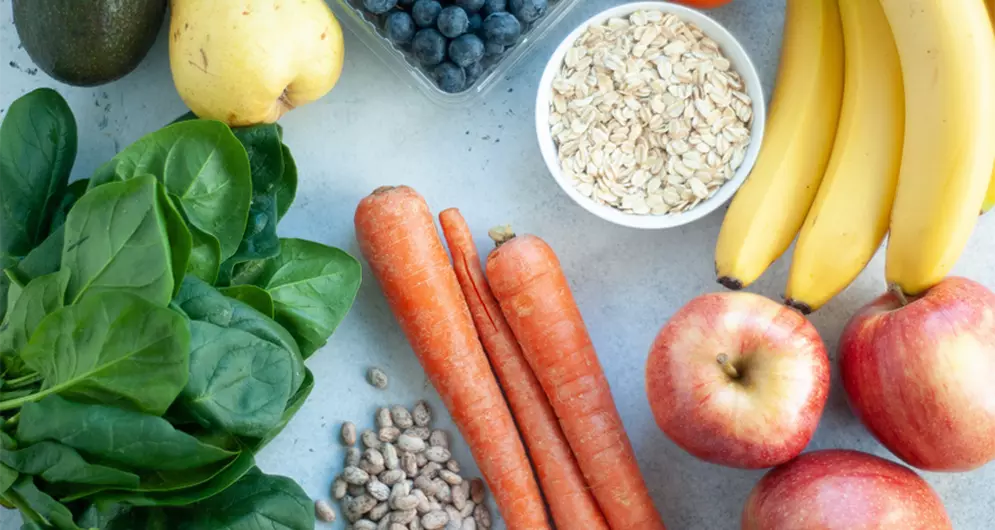Newsflash: there’s no such thing as the perfect diet! Whether you count macros or follow a diet trend, focusing on better nutrition is always a good idea. In fact, the “perfect” diet is whatever diet best suits your personal goals and lifestyle! That’s where the challenge lies: if you’re looking to fine tune your nutrition to accomplish your goals, it can be hard to know where to start.
Whether you’re hoping to lose fat, gain muscle or just eat healthier, we have tips that will help you find that balance!
1. Fuel Your Body
First of all, don’t undereat! Calories are not the enemy. If you fuel your body for health and performance, you will optimize your health and performance. If you restrict calories or entire food groups, you may be depriving yourself of the energy and nutrients you need to live and feel your best.
If you’re low on energy and “hangry” 95% of the time, your approach may be too extreme — even if your goal is to lose weight. Undereating can actually make it harder to lose weight and keep it off. Less isn’t always better! 1,000 calories per day is what a toddler needs, not a full-grown adult. Eating an adequate amount of food fuels your metabolism and prevents your body from going into “energy conservation” (a.k.a starvation) mode.
Ask yourself:
- Am I hungry before meals?
- Am I hungry all day long?
- Do I have enough energy to complete my normal daily tasks?
- Do I have enough energy to exercise if I choose to?
- Do I wake up hungry at night?
- Does my diet make me stronger or weaker?
If you’re not sure how much you should be eating to reach your goals, Macrostax is a great place to start. This leading macro counting app answers all your “how much should I eat?” questions with customized calorie and macro (carb, protein, and fat) plans. Their philosophy on fueling your body is geared towards long-term sustainable changes rather than deprivation or fad diets.

2. Consider Energy Density
“Energy density” is the amount of energy you get from eating a given quantity of food. A high energy dense food has a large number of calories per standard serving (such as pizza), whereas a low energy dense food has a small number of calories per standard serving (such as spinach). You can eat far more spinach than pizza in order to get the same amount of energy!
One type of energy density is not “better” than the other - a balanced diet should contain foods that are both higher and lower in energy. However, it can be helpful to think about the energy density of foods if you have specific goals such as weight gain or weight loss.
If your goal is to lose weight, you may want to incorporate more low energy dense foods into your diet. This is because you can eat more of those foods if they have less calories, so you feel satisfied. For example, eating chicken on top of a substantial salad can help your meal feel “bigger” than eating chicken with a tiny portion of mashed potatoes.
If your goal is to gain weight, you may want to incorporate more high energy dense foods into your diet. This helps keep portion sizes moderate and manageable. For example, it’s probably easier to eat one baked sweet potato (a higher energy dense food) than it is to eat five bell peppers (a lower energy dense food).

3. Focus on Whole Foods
Whole foods are an important part of any balanced diet. What do we mean by “whole foods”? Foods that are minimally processed and are generally found in the perimeter of the grocery store.
For example, fruits, vegetables, meat, seafood, most dairy, eggs, and whole grains are full of important macronutrients (carbs, protein, and fat) AND micronutrients (vitamins and minerals) that our bodies need to thrive. That’s not to say other foods are never a good option. There’s nothing wrong with canned beans, frozen veggies, dried fruit, pasta, or plenty of other foods that you might find packaged in the center aisles of the grocery store!
Ask yourself:
- How often do I eat premade foods from a restaurant or package?
- How many servings of fruits and veggies do I eat a day?
- Is my plate colorful?
- Do I recognize the ingredients listed on the Nutrition Facts labels of most of my foods?
If most of your meals are cooked in the microwave or produce rarely graces your shopping cart, you may want to rethink your grocery list!

4. Remember the 80/20 Rule
When it comes to your diet, there are two things you should always remember. The first is that life happens! The second is that nobody is perfect. Food should never be the biggest source of stress in your life, and neither should it prevent you from enjoying important life events and experiences!
That’s where the 80/20 rule comes in: 80 percent of the time do your best to eat healthy, whole foods that meet your energy needs and goals. The other 20 percent of the time, don’t worry about calories and focus instead on enjoying yourself in that moment.
That doesn’t mean you should eat really well for the first eight days and then go wild with fast food the last two days. That’s not balance. It means that if you eat whole foods the vast majority of the time, you shouldn’t sweat the details if you want to enjoy a once-off piece of birthday cake or your favorite cheesy dip at a party.
Ask yourself:
- Do strict food “rules” prevent me from participating in social events?
- Do I obsess about food to the point where I can’t enjoy myself?
- Or, on the other hand: are my “cheat meals” becoming a daily occurrence?
If life gets in the way of food, or food gets in the way of life, you may want to rethink that balance!

5. Fill in the Gaps
What’s the best way to identify gaps in your diet? How do you know when it’s time to start supplementing with extra nutrients such as protein or vitamins?
These are questions that never have a “one size fits all” answer. There are many factors that play into supplementation. For example:
Ask yourself:
- Do you regularly meet your calorie and protein targets?
- Does your schedule/lifestyle facilitate only whole-food based meals and snacks every day?
- Do you have any dietary restrictions or preferences that make it difficult to eat a balanced and varied diet?
- Has your medical team recommended that you supplement your diet?
Some people find it challenging to get 100% of their nutrients from whole foods alone. And that’s okay! Whether you’re a busy mom, travel often for work, or follow a really rigorous workout regimen — there are plenty of scenarios where it’s more realistic to follow the 80/20 rule when it comes to whole foods vs. supplements as well.
If you’re wondering, “What is my protein goal?” that's a great question! Try our protein calculator. Once you know your protein goal and start tracking your daily intake, it will soon become clear whether you need to supplement your diet. Knowledge is power!
No matter where you are in your nutrition journey or what eating philosophy you follow, it is possible to find your version of a balanced healthy diet. While that may look slightly different for every person, these tips should ring true for almost any body!






